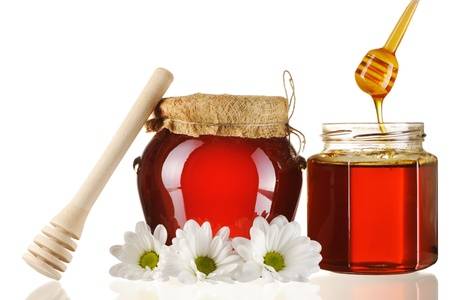Can honey kill cancer?
Most of us know honey as a healthy sweet treat, but few people are aware that it is a cancer killing agent.
Honey is a great healing food. Eating honey is great for heart health and you can even use honey to heal wounds, but did you know that it can be beneficial to fight deadly diseases that are seemingly incurable like cancer?
In fact, a study published in the journal Molecules has analyzed the positive impact of honey on the development and progression of tumors and cancers. The review identified the existence of flavonoids and phenolic acids in honey as the main anti-cancer compounds involved in its beneficial properties.
Based on the study, flavonoids are biologically active natural compounds with a 15-carbon (C6-C3-C6) structure, consisting of two benzene rings connected by a heterocyclic pyran ring, with honey comprising the following:
- Chrysin
- Hesperetin
- Pinocembrin
- Naringenin
- Quercetin
- Pinobanksin
- Genistein
- Apigenin
- Luteolin
- Kaempferol
Interestingly, plenty of these flavonoids are categorized as phytoestrogens, which are phytochemicals structurally alike to mammalian estrogens and thus can bind to the estrogen receptors. Although many of these honey-derived flavonoids have been shown to have inhibitory and stimulatory effects, the vast majority of cellular (in vitro) and animal (in vivo) studies have demonstrated the anti-breast and estrogen-sensitive cancer properties of these compounds, which indicates that flavonoid-rich honey is likely to positively influence estrogenic activity in cancers with positive estrogen receptors.
In addition, some honeys, such as Tualang honey, exhibit the property of selective cytotoxicity, which means that target cancer cells by inducing programmed cell death while leaving non-cancerous cells unscathed. This is extremely distinct from the mechanism of action of conventional chemotherapeutic agents behind and radiotherapy that are indiscriminately directed to both cancerous and healthy tissue, often giving greater survival benefit to the tumorigenic cells themselves: cancer stem cells.
Unlike radiotherapy and chemotherapy, natural compounds typically exhibit this property “no harm” when it comes to healthy tissue, while at the same time are exceptionally effective at attacking harmful cells.
Is Honey Better than Chemotherapy?
Another recent study compared the effect of Tualang honey with pharmaceutical tamoxifen (an estrogen receptor antagonist) in two breast cancer cell lines (MCF-7 and MDA-MB-231). The study discovered that the anti-cancer effect of Tualang honey on breast cancer cells was similar to that of tamoxifen, a multi-million dollar blockbuster drug. This is all the more incredible, since tamoxifen is classified by the World Health Organization and the American Cancer Society as carcinogenic to humans, and is technically a xenobiotic chemical, inherently toxic and biologically foreign to the human physiology.
Honey Kills A Wide Variety of Cancers
Honey has shown to have an effect on a variety of cancers, including:
- Liver Cancer: It has been found that Gelam honey kills liver cancer cells, which exhibit selective cytotoxicity, cytotoxic, anti-angiogenic and anti-proliferative research and animal cells.
- Prostate Cancer: Greek honey’s (pine, thyme and fir honey) has been shown to have anti-proliferative properties.
- Colorectal Cancer: nenas and gelam monofloral honey exhibit properties of anti-cancer in colorectal cell lines.
- Other Cancers: have been a number of studies on the anti-cancer properties of honey, focusing on the following types: a) bladder b) renal cell carcinoma c) endometrial d) cervical e) skin cancer cells f) mouth cancer g) non-small cell lung cancer h) bone cancer (osteosarcoma).
What are the Mechanisms of Anti-Cancer Properties of Honey?
There are a wide range of observed mechanisms of the cancer-killing properties of honey including:
- Cell Cycle Arrest: The normal process of cancer cell replication is halted.
- Induction of Mitochondrial Outer Membrane Permeabilization: The induction of mitochondrial outer membrane permeabilization (MOMP) leads to leakage of intermembrane space proteins into the cytosol and consequently causing cell death
- Activation of the Mitochondrial Pathway: compounds or agents such as honey rich in flavonoids that are capable of activating mitochondrial pathway and release of proteins such as cytochrome C are considered potential cytotoxic (cell-killing) agents.
- Induction of Programmed Cell Death (Apoptosis): The activation of a “cell death” program designed to protect against cancer.
- Amelioration of Inflammation: Inflammation is at the root of many cancers, and since honey is able to suppress it, it is can significant impact carcinogenesis.
- Inhibition of Angiogenesis: Honey has been found to inhibit the fundamental process of cancer expansion (the production of a new blood supply) by inhibiting angiogenesis.
- Modulation of Oxidative Stress: It is believed that honey’s antioxidant properties may nip one of the fundamental processes in cancer’s progression – oxidative stress – in the bud.
- Modulation of Insulin Signaling: Because cancer is associated with increased insulin resistance and honey is capable of reducing insulin resistance, it is believed to mitigate a major driving factor in carcinogenesis.
As you can see honey can have amazing effects on your body with fighting cancer. So now might be a good time to add this delicious substance to your diet. We always recommend using raw honey as it will maintain it’s all the natural healthy substances it was originally created with. As usual, consult a doctor before making changes to your diet that might affect your health. If you have any stories about how honey has had a positive impact on your life please comment below. Have a happy and healthy day.



